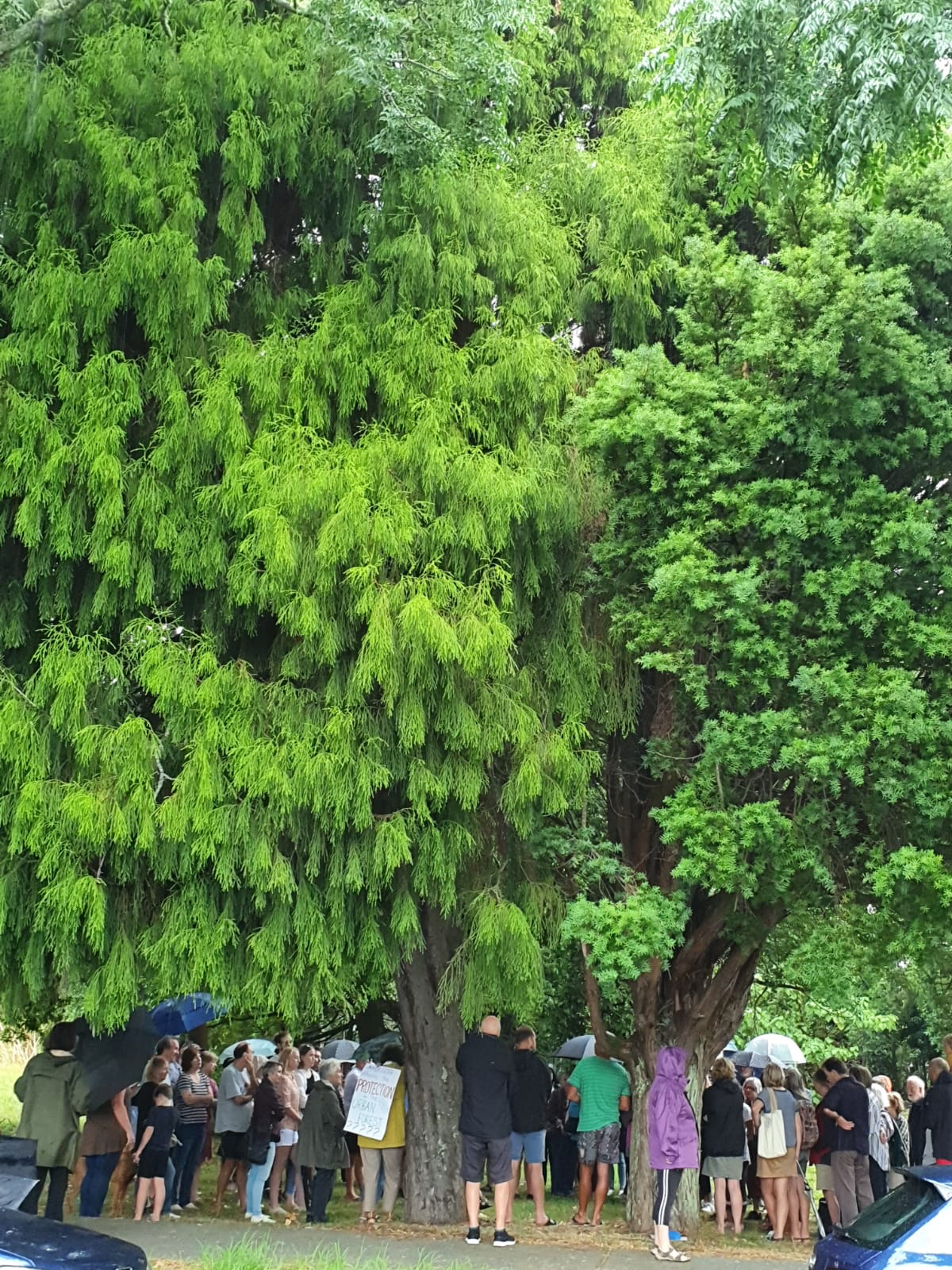Plea to save native trees
Support is being sought from the Auckland branch of the New Zealand Institute of Landscape Architects to help save 46 mature native trees which campaigners fear will be chopped down by developers.
The urban forest sits across several titles in Canal Road, Avondale. The trees were planted nearly a hundred years ago, with some towering 20 metres. Only one is protected - a pohutukawa. Seventeen different species make up the rest, including black maire titoki, totara, rimu, puriri, whau, mangeao and karaka.
A protest was held earlier this year to argue the case for saving the trees.
The property’s been owned by one family but is now up for sale. Auckland Council has been asked repeatedly to buy the property because of its ecological and botanical significance. But it’s refused. Senior policy manager Paul Marriott-Lloyd said in a statement there were no plans to purchase the land, pointing out another reserve already exists on the same street.
The Council, in another statement, said it was guided by the government's amendment to the Resource Management Act and that there were many initiatives to manage or increase tree cover or protection across the city, such as the Urban Ngahere Strategy.
"The aim of the Urban Ngahere Strategy, among other goals, is to increase canopy cover across urban Auckland; address the unequal distribution of canopy cover; and plant diverse tree and plant species."
Boundaries as indicated on a For Sale sign
But landscape architect Mark Lockhart says the council’s missing the point. Saving the block of trees isn’t about adding green space to the area, it’s about biodiversity and the retention of mature native trees,” he says. The council’s reasons (for not buying the site) - that there’s enough green space - goes against all of the Urban Ngahere Strategy principles.
The Auckland Botanical Society and The Tree Council have also added their voices to the call for council intervention. In a letter to council the Botanical Society wrote: “We join the Tree Council in not understanding why implementation of Auckland Council's Urban Ngahere (Forest) Strategy, which states that "protecting existing ngahere is crucial to safeguarding the added values and benefits mature trees provide" is not embedded in the Key Performance Indicators of every senior manager and their departments - we urge the Council to protect these wonderful trees (which show no sign of suffering in the current Auckland drought) and create a new park with natural living shade.”
The unoccupied site - which only has one building on it - is on the corner of Canal Road and Wairau Avenue, Avondale, comprises four sections, containing 46 mature native trees.
Lockhart says a conditional offer was made for 52 - 58 Canal Street before Christmas. “I am concerned that the condition of the sale was that the trees be removed.”
That sale doesn’t appear to have gone unconditional yet, which is why Lockhart and other conservationists are still pinning their hopes on the council stepping in. And he’s asking the Auckland branch of the NZILA to support their request to the council.
“We’ve got 46 large native trees here,” Lockhart says. “Stripped down to its bones I don’t think anyone can argue it’s not a special site and these sites are now rare.”
“As an Auckland-based landscape architect, my experience of intense residential developments is a “scorched earth” approach which is profit driven.
“It is probably the only private property in Auckland with such an array of mature trees. Its location in an urban landscape that will become intensely developed makes it a perfect site for a pocket park. Apart from the obvious botanical uniqueness of the site, it is valuable from an ecological, biodiversity and visual amenity perspective.”


